the minster of verchen.
the kummerower see is mecklenburg-vorpommern's 4th largest lake and actually germany's 8th largest. my parents often told me stories about when they were young, they made vacations here, in a little village called verchen on the northshore of the lake. i love hearing old stories about my parents and seeing places they've been to when they were young lovers, so i insisted on making a day trip to the lake! the whole region around the lake felt like it was in a rip van winkle sleep, it all was very remote, even more so than how malchow already felt. there is much history to discover here, though, that i personally feel needs to be woken up more, but i also loved the rustic charm of it all, the half-forgotten old buildings and the landscapes around the lake, with slightly boggy parts surrounding it ( the lake is home to one of middle europe's biggest fens as well, which i find quite intriguing ). it's probably not in vain also that this part of germany sometimes is called mecklenburgian switzerland, as this region also got a very hilly countryside - it's full of push moraines all stemming from the last ice age and they can reach up to 100 meters height! which is high for the north of germany, as it is mostly flat as a flounder ;)
verchen is a small village with about 400 inhabitants, that seemed perfect for a relaxation vacation! it has access to the lake ( you can go for a swim or do a boat ride across the lake ), and it offers quite a few places where you can stay at. the closeness to the peene river which is one of the very last rivers in germany that hasn't been tendered with, promises more adventures by boat and raft! and many little villages nearby offer more hidden cultural pearls! this is definitely a place i'd like to revisit again, especially for the water tourism out there. i would love to explore the fens and the peene and maybe find a beaver or two ;) i'd also be super happy with otters!
this building got erected for the senior civil servant of verchen in 1603 from the materials of the torn down monastery that existed in verchen until 1582. it's said that it stands on the grounds of where some of the monastery's buildings were situated. there seem to still be cellar rooms underneath that indicate this.
today it is a youth & family hostel that offers lots of activities for any visitor.
before we continued our exploration of the village, we decided to check out the beach and just take in the very meditative lake atmosphere. i remember us sitting down on a bench and nodding off into napland even 😂
lake kummerow is 11 km long, about 4 km wide and has depths up to 23 m, though on average it is about 8 m deep. it holds 262 million cubic meters of water. there's also a curiosity fact about lake kummerow, it lies mostly below sea level and is thus heavily affected by the water levels of the river oder into which the peene river flows into. the oder through their connection to the szczecin lagoon and the bay of pomerania has starkly changing water levels and when it carries high tide the peene river will not flow its normal course and can be reversed, basically being pushed back inland. this can actually happen pretty often after heavy rainfalls or when there are storm tides in the baltic sea. even when the wind is an ongoing western one, the waters in the szczecin lagoon will create a bank-up and then this may create a reverse flow to the oder river, which carries on to all the other conjoined rivers. we are talking about a huge river system here that basically can effect half of mecklenburg-pomerania.
definitely one of my biggest dreams, to go on a sailing or boating trip around mecklenburg-pomerania. that would be such a wonderful vacation idea.
after snoozing a little we eventually got hungry, so we walked towards the 'aalbude' ( eel shack ), which is situated right next to the outflow of the peene river. actually, aalbude is not exactly a shack, but a district of the city of dargun. it had been a shack once in history, though, or rather perhaps a cluster of many, as this place was home to many eel fishers. coming from verchen you'll have to get onto a ferry to reach aalbude, where a restaurant awaits you and a recreation and rest area for waterway tourists.

the ferry is really just a small boat, it will only carry pedestrians and cyclists. you can see it here on the other side of the river! it only operates during high season from march to october, in winter the service is shut down.
the view towards the lake.
we had a nice meal at the restaurant ( i think it was fried eel for all three of us and it was delicious! ) and after, we returned back to lake kummerow.
one last glance before we returned to the village some more. what i liked about verchen was the fact that the water was never far away, the whole village seemed to always be in close proximity to the lake. at any time you could cut through a little street and have it right in front of your eyes again.
loved this iron fence!
a bungalow i would absolutely stay in! it had a nice view onto the lake as well. when i looked into the prices of accommodations around here i was actually super surprised to learn that it was all very reasonably priced and not expensive at all! some bungalows you could rent directly by the lake, were about 700 euro a week for 2 persons in high season. for germany that is very affordable, i can tell you that!
i would love to rent such a bungalow with access to the lake by boat! some offered an additional boat even.
nostalgia galore with this car! it is a wartburg 353, another iconic GDR car ( next to the trabi ). i remember our family driving a wartburg as well, though i don't think it was this type, probably one of the 1.3 series. i know there are photos of me on top of the car posing, i really need to find those 😅
abandoned looking house/barn. there were a few abandoned structures in the village, forgotten to time.
i did love all the bungalows, though! they had such a GDR vibe to them, too. i remember my parents always telling me that they did stay in a holiday complex, but when we visited they couldn't remember where it had been exactly. they told me about bungalows that were behind a restaurant, and we did find a building that looked like it had been a restaurant once as well, but it was in dilapidation. you could see a few bungalows behind it, though, it might have very well been the place they stayed at! after the fall of the berlin wall the complex was probably disassembled bit by bit, but it still made me glad to find at least a few tiny remnants of those GDR times.
freaking adored these cute scrap figurines! such a whimsical creation :)
more typical GDR architecture. corrugated sheet iron was always used in some way or another. the overall design was a very clean spartanic minimalism. that's why i love when patterns and shapes are used as decorational elements.
we met this grim-looking cat as we passed by some bungalows and it was my most favourite thing :D she turned out to be very friendly, though and i was able to pet her for a bit.

i always am on the lookout for peculiar fence design, and this one boasted penguins! loved it!
ended up at the lake again. a sweet little assortment of boats was docked here.

i walked on this little pier to take a look at the pedalo boat on the right!
it was the cutest little vehicle, i would have loved to rent it and take a picnic basket and some swimming essentials and then pedal out to the lake for a while!
we watched cormorants and seagulls sunbathing on some driftfood in the lake.
and always there were little boats waiting to be driven out onto the lake!
such an idyllic scene!
there were some really flat parts in the lake were you could still stand. this kid surely had some fun in the water, while its parents watched her play.
we continued our walk along the coastline, particularly the part where there is even a cliff line overlooking the lake on the eastern side. there was a little hiking route along that cliff to a little harbour called 'gravelotte' and we explored that. soft hills were surrounding us, dotted with little spinneys. this whole landscape had been formed by glaciers eons ago and it felt so palpable imagining the forces of nature doing their work.
a beautiful view onto kummerower see from the cliff line!
towards verchen. i loved the overgrown green shores.
a little panoramic capture! sometimes i should do more of these!
cottonwood wool-covered path!
nice little spot to have a break or a nap!
an erratic block left from the ice age era. you can find boulders like these all over northern germany and sometimes really big and heavy ones!
admired the flora along the shores as well. carthusian pinks are sweet little flowers that were used in medieval times for rheumatic ointments and could often be found in the gardens of monasteries.
always a window opened towards the lake.
a dead tree, outstretching its many limbs into all directions.
meadows and wooded areas provided variety on our little walk!
the grasses and trees were swaying in the wind and created a tranquil mood.
glacier landscapes.
as we reached the place 'gravelotte' ( which is a hotel ), we encountered a little compound with fallow deer! they had a fawn with them that was jumping around wildly and following its caregivers. it was the cutest sight!

spotted a greenfinch as he warbled a beautiful song into the world.
boxthorn blossoms! this plant will yield little orange fruit later - goji berries. as you have probably guessed, the shrub was introduced to europe from china, and in germany it grows best in the east. the berries are a recent trend food - it's supposed to help with a lot of maladies. studies have shown, though, that it actually doesn't have outstanding effects and is considered just a simple edible fruit.
common agrimony - a medicinal plant often used in astringent & anti-inflammatory medicines.

returning back to verchen we made a short stop at the church. it's actually a minster, as it was the convent church back when it still existed. the church was built in 1269 and is an early gothic hall church. the bell tower ( shown in the beginning of this post ) was erected in the 15th century and the stained glass windows as well. they are some of the oldest glass windows in mecklenburg-pomerania.
the altar inside is also quite ancient, it was created in 1420.
medieval paintings were revealed in 1969 and subsequently restored bit by bit, you can still see and marvel at them today. i really liked the interior of this little church, it felt very cozy and friendly.
back outside, i walked a little more around the church. the belltower can be seen here again.
old iron cross that i liked a lot for its elegance.
the church's main entrance.
as we still wanted to see a little more of lake kummerow, we decided to visit another shore-site attraction - kummerow castle.
this special place went through many changes since its first mention in 1222 ( when the village cummerow was founded ). the building you see today was erected in 1730, the role model for it was the baroque versailles palace in france. before 1730 it was a water castle and had a changeful history due to being close to the mecklenburg border and that meant continious feuds between the two principalities ( kummerow itself was a pomeranian village with town ordinances ). the old castle burnt down in 1725, but the owner, axel albrecht II of maltzahn, initiated new construction soon after. the family of maltzahn had always been of great importance in the annals of the castle, they owned it several times since 1236 ( and lost it many times, too ). while this nobility was expropriated of all their properties after the second world war, some of the descendants are slowly reclaiming their old possessions again by buying some castles in the area. kummerow castle though, was bought by an investor in 2011, torsten kunert, who renovated it and intiated a photography collection within its historic walls. the charm of the castle derives from the conscious decision to renovate where it needed renovation, but to keep it the way where it didn't need new reconstruction. that's why the castle looks a little patched up in places. what i like about this approach is the fact that it recognizes the history of the old building and integrates more modern additions after the expropriation ( architectural elements from GDR times for example ).
unfortunately, seeing i have great interest in photography, we didn't enter the collection on our visit. after i looked into it in the aftermath, i regret it, because it holds a big collection of GDR-related photography and even has exhibitions on international photographers from time to time. recently, i have been thinking about returning to this region again and if i do, i will put the visit to castle kummerow on the top of my list, for sure!
surrounding the palace are many neighboring buildings in several conditions, some already renovated and in use again, some very ruinous and awaiting to be brought back to life. this once had been the servant's house, but as of course there are no servants anymore serving nobility in the palace it has been put into new use: it is is a vacation rental now. a pretty sweet one if i may say so!
this interesting sculpture was right in front of the palace and it charmed me not with its overall form but actually the closer details! made out of chrome nickel steel, 'the wave' by martin & brigitte matschinsky-denninghoff shows in an interesting way how even this hard material can be turned into something fluid & and sort of oscillating. the artist pair was pretty well-known for these kind of sculptures, you can find much of their work all over germany and even japan! there is one sculpture that is very close nearby where i live in mainz - maybe i should check that one out in the future.
when you moved around the sculpture, you had the feeling that it moved with you, and the surface structure felt like an optical illusion. it truly felt a little like you were watching waves pulsating & vibrating.
big barns were left on each side of the palace, all of them pretty beat up. but somehow it added to all the forlorn charm of the whole property.
old and new plastering was visible all over the building, giving it quite a beautiful patina.
i liked how the main entrance still had a little original part in the top left corner, showing how the door had looked like before it was renovated.
exploring more of the surrounding buildings. i think these were once horse stables and perhaps carriage houses.
all the old brickwork and leftover GDR plastering created a little bit of a desolate mood. but one i certainly approve of in terms of finding abandoned places ;)
one can only guess what it looked like during the GDR era, but this is a pretty accurate image, minus the broken and barricated windows. the typical grey plastering was very common in the GDR.
vines of ivy taking possession over the time-honoured walls. i loved that below the cropped old plant there was new growth.
taking a peek inside the ruins and discovering gorgeous old blue and white tiles!
nature growing inside the old pigsty.
i read somewhere that foals were kept inside this part of the barn. i'd certainly would like to know how those old barns and stables looked like when they were still in use.

lots of rubble could be seen everywhere.
in the little house in front of the horse stable the coachman had his living quarters. the servant quarters on the direct opposite of the courtyard are symmetrical when it comes to the architecture and there is also another similar building like the horse stable, but it was used as a granary. i personally feel like the owners of the palace should revive the coachmen's quarters as a residential building and perhaps even try to put the barns to good use as well. maybe a café or restaurant would be some additional good ideas?

looking back to the palace and the other side of the courtyard where you can glimpse the other estate buildings.
a hidden graveyard we found as well, apparently it isn't a historical one, but one created by the artist uwe schloen. it is called 'the cemetery for literary figures' and gives a nod towards quite a few literary heroes in german literature that died in the books, but haven't had their burials broached more thoroughly. these headstones seem to be a testament to those literary figures and offer an actual place to mourn them.
unfortunately i couldn't detect which hero was mourned, apparently there are supposed to be some clues, though. i guess, i am not well-versed in german literature enough ;P
if this actually had been a resting spot, you would certainly have a lovely view!
towards the lake on the seaward side of the palace we came across the most beautiful wild meadow! it was deliberately created with pathways cutting through it. it felt absolutely magical and dreamy!
... but also other plants like blueweed, yarrow, and poppies! and many more that i couldn't possibly name just by looking at this image ;P
the abundance of flowers on this meadow was just breathtaking, and it made me yearn for an own garden where i could have a similar patch of meadow growing as nature intented it to grow.
all in all, this kummerow palace was worth the visit even without taking a look at the photography collection. it's such a dreamy and history-rich place, where you can actually feel the weight of past times, but in an exciting way! i'd love to return to lake kummerow, i hope i can make it happen next year in springtimes when the mosquitos aren't yet aggressive, but the temperatures are already mild enough for possible swims. maybe late may or early june? whatever i decide on, lake kummerow, you are not forgotten ❤



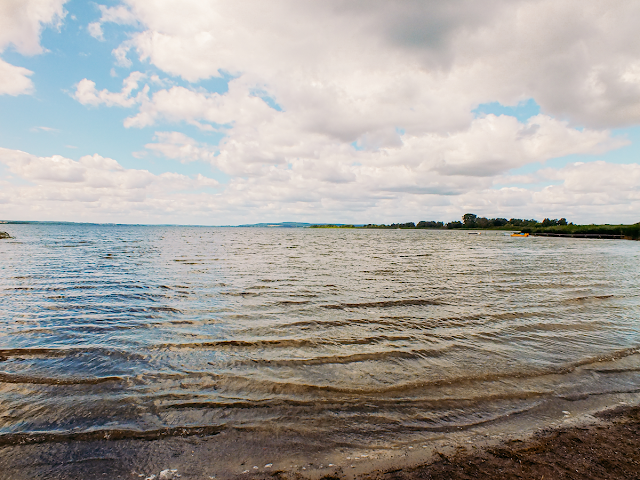





















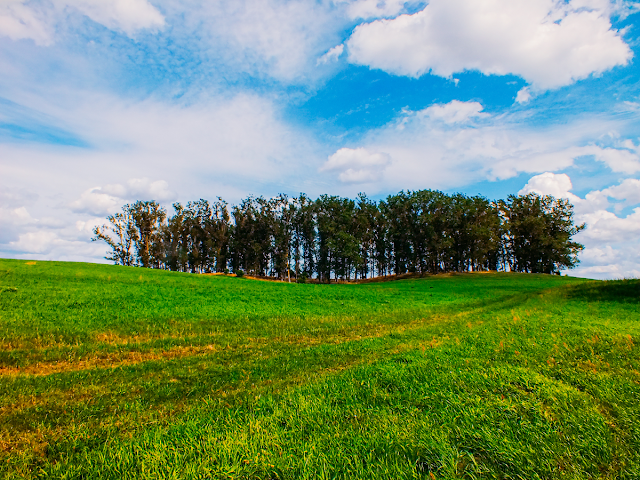






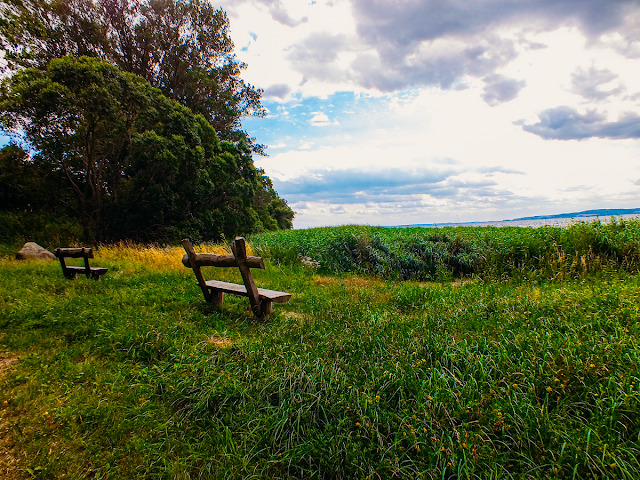


















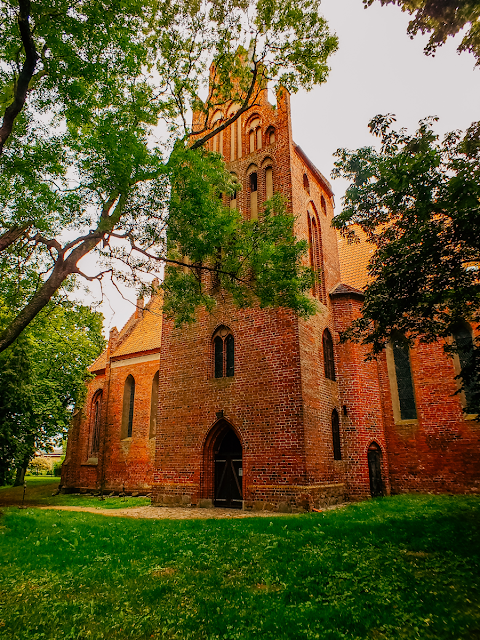










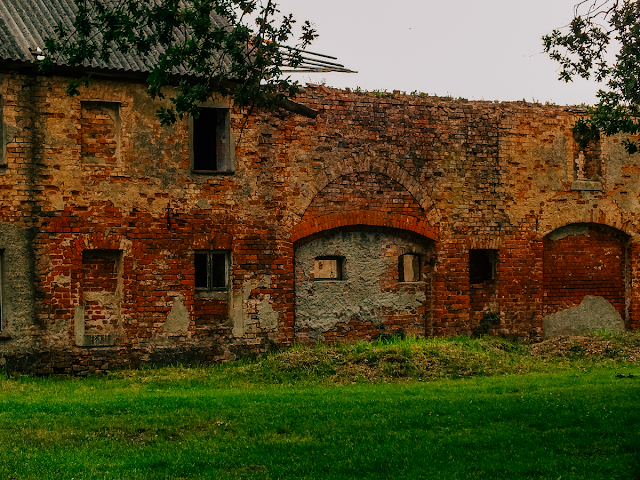













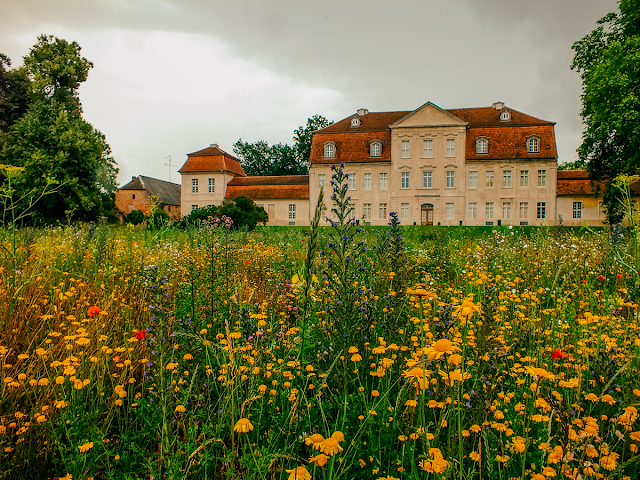

Comments